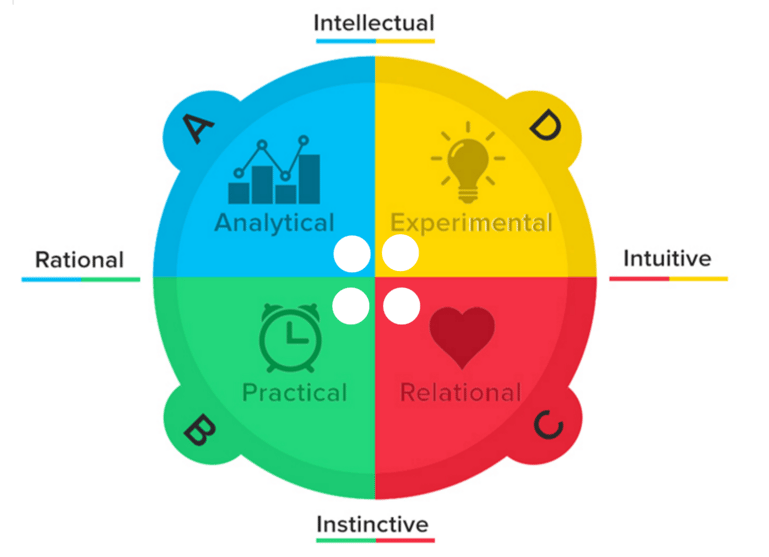Getting People to Embrace Change
As a business owner, you know that the business world is ever changing and you must adapt to the new environment or die. You may see the need to change and see all the benefits to change, but your people may not. Even worse, is that they may resist the change. To many, change equals uncertainty and that leads to fear. Humans like consistency and situaitons that are predictable. The Whole Brain Model can be an effective tool to help your people plan for change and implement change.
Change can be in many areas. It may be in sales implementing a Customer Aligned Selling process and the older reps will resist adapting it for it requires them to learn something new, change behavior and work harder at the unfamiliar. Old habits of selling die hard. For operations, it may be that the operational processes were developed from an internal perspective and the business owner wants to move to a customer centric approach focusing on meeting his client's needs in a responsive manner. With IT, it may be a new SaaS based software that threatens their existence or a software platform that requires learning new programming. Most new initiatives fail becuase an effective change management process was not implemented.

The Whole Brain® Thinking model is a great tool to use in planning for change. By using this model, you cover how all your team maybe thinking and will address their issues from their perspective. Many times, people resist change for it is not presented from their perspective and their quesitons are left unanswered, thus creating fear or resistance.

As you plan for change consider your audience. Your goal is to answer questions which gets buy-in. Do the change management planning by addressing questions from each brain quadrant that your employees might ask.
For the Blue/Analytical quadrant ask or answer these questions:
- What is the bottom line?
- What are the facts presently and where we want to go?
- What are the financial consequences of changing and not changing?
- What is the logic behind the decision?
- What is the goal or objective of the change?
For the Yellow/Experimental quadrant ask or answer these questions:
- How is this going to affect my future or the company's future?
- How does this change fit into the big picture?
- What's the "Why" behind the change?
- Do I have freedom to inflluence how this gets rolled out?
- How might this constrain me?
From the Green/Practical quadrant ask or answer these questions:
- Is there a specific timeline?
- What are the specifics of the change?
- What's the track record for this type of change?
- Are there references I can talk to?
- How can I minimize surprises?
- What are the risks to me?
From the Red/Relational quadrant ask or answer these questions:
- Waht will the emotional impact be on me and my team be?
- What are the implications for my customers?
- Who will be available to listen to my concerns?
- Can you engage with me personally before you get focused on all the facts?
Using the Whole Brain® Thinking approach to addressing change will ensure that you have covered everyone's perspective and will help accelerate the adoption of change. As the change management agent or business owner, put yourself in your employees shoes and address the issues from their perspective.
To discuss how Whole Brain® Thinking can be used for Change Management, improve internal and extenral communications and improve your sales process, let's have a 30 minute discussion. For more information on Whole Brain® Thinking search the resources at Herrmannsolutions.com

